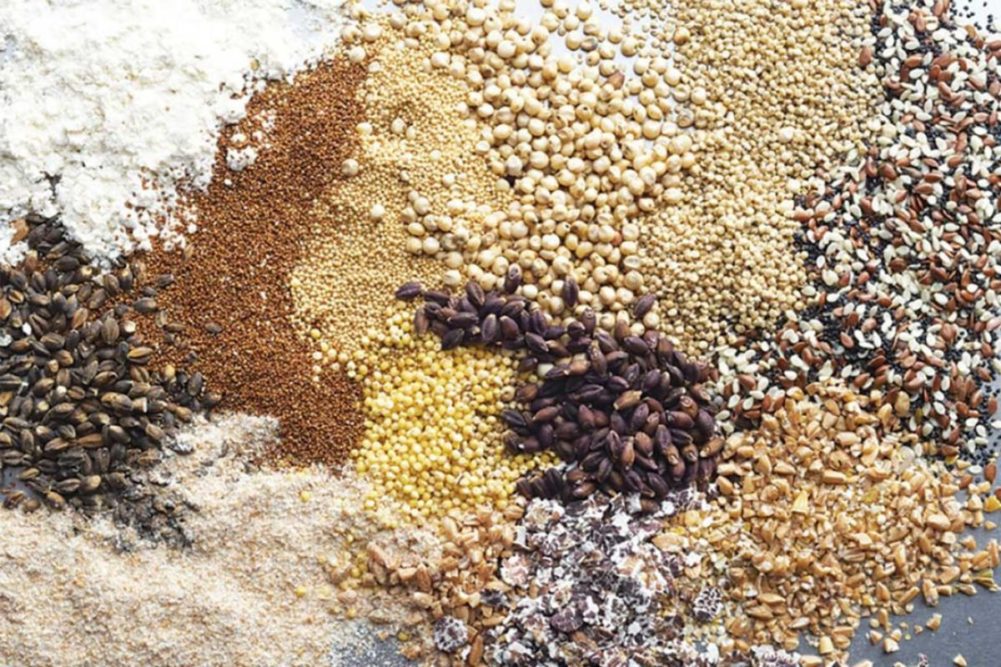KANSAS CITY, MISSOURI, US — Bakers are going beyond the ho-hum by using heirloom wheats and alternative flours made from such grains as sorghum or even watermelon seeds. Although most flours still come from wheat, corn and rice, trying something out of the ordinary can be a draw for consumers who are searching for differentiated finished products in the marketplace through the introduction of various flours that provide a wide array of color, flavor, nutrition and texture. And there’s a marketing bonus, too. While all these sources of flour are technically plants, flagging legume-, nut- and vegetable-based flours on product labels appeals to consumers following plant-based diets.
With most baked foods, it’s not a simple swap of one flour for another, especially if the flour being replaced comes from wheat, which is a source of gluten and responsible for the desired elastic texture of batters and doughs. Corn and rice flours are inherently gluten-free.
“When substituting alternative flours for wheat flour, it is important to keep in mind that the alternatives may have a different composition in proteins, fibers, vitamins, etc., from the wheat flour,” said Amr Shaheed, technical service manager, food applications, Innophos. “This will alter the rheological properties of the dough or batter. As a result, alternative flours may have different water absorption capacity, which may impact their viscoelastic properties responsible for gas retention.”
Alternative grains can replace any of the three major grains, noted Sean Liu, research leader at the US Department of Agriculture’s Functional Foods Research Unit in Peoria, Illinois, US. These substitutes are not necessarily grains themselves, but they are diverse.
Keith Petrofsky, director of research and development for Ardent Mills, spoke about the burgeoning alternative grains sector at this year’s IFT FIRST, the Institute of Food Technologists’ meeting and exposition. He explained that cereal grains such as sorghum, millet, rye and barley are recognized as alternative grains, as are heirloom wheat varieties such as spelt, emmer and Khorasan. He counted non-cereal grains, like amaranth and quinoa, as alternative grains, too. He even put pulses, such as chickpeas, lentils and yellow peas, in the alternative grains category.
“All of these really fit into a big broad category that people call alternative grains,” Petrofsky said. “There are a lot of different colors, flavors and textures.”
Kathy Lewis, senior research and development scientist at Ardent Mills, said alternative grains in comparison to wheat flour can offer added nutritional benefits. This is a growing consideration for consumers purchasing baked foods, according to Ardent Mills’ market research.
“The protein content of alternative grains is especially appealing to today’s consumers,” Lewis said. “In addition, some of these ingredients may contain higher amounts of certain vitamins and minerals, dietary fiber, antioxidants and phytonutrients than conventional wheat. Many alternative grains and pulses lack gluten, which is composed of two proteins, gliadin and glutenin. These proteins combine to form viscoelastic networks in various baked goods, which provide structure, volume and impart texture to breads, cakes, cookies, crackers and snacks. The lack of gluten presents formulation challenges to the product developer. This can be overcome by using a combination of alternative flours, starches, fibers and protein ingredients.”
Ardent Mills’ research revealed that consumers do not necessarily expect baked foods containing alternative grains and pulses to match wheat-based baked foods’ finished product flavor and texture profile. They do, however, expect these products to taste good and be high quality.
“Each grain has unique attributes, so choosing the right flour depends on what bakers are looking for and prioritizing,” Petrofsky said. “Our gluten-free flour blend mixes an assortment of alternative grains to create a flour that mimics the functionality of traditional wheat flour but includes more nutrients and flavor.”
Healthy Food Ingredients offers a range of grains in whole form that may be further processed into flours. This includes ancient grains, cereal grains, purple corn and pulses. While nutrition and functionality are critical to selecting alternative grains, consumer interest can go beyond those attributes.
“Consumers are demanding products that are not only clean label and traceable but also tell a story, boast additional health claims such as gluten-free, organic or regenerative and utilize diverse ingredients, such as pulses, ancient grains and seeds,” said Jennifer Tesch, chief marketing officer, Healthy Food Ingredients.
Corbion offers a range of grain-based blends for the baking industry, including grain and seed blends, grain bread mix, super-soaked grains and hydrated ancient grains.
“Our grain seed blends add flavor enhancement and simplify inventory,” said Yanling Yin, PhD, director of research and development at Corbion. “With a ready-to-use product, bakers don’t need to source and inventory 12 different types of seeds and grains. Pre-soaked grains allow for quick processing. Historically, if bakers wanted to add extra grain to their bread, they would have to soak the grains overnight. By saving them this step, they can adjust formulas more quickly and balance moisture.”
A new player in the alternative grains space is Mosaic Grove, which offers tigernut flour made from milling tigernut tubers and sieving the powder to the desired consistency.
“Tigernuts are nut-free, gluten-free and dairy-free,” said Kaadze Wright, chief executive officer, Mosaic Grove. “The flour is richer than all-purpose flour in dietary fiber, vitamin B, calcium, potassium, magnesium and iron. It is also low in carbohydrates, which makes it ideal for paleo and ketogenic diets. It can be used in the same way as wheat flour but with the added benefit of being a healthier substitute.”
Red River Commodities offers sunflower flour that’s a high-protein, partially defatted ingredient with a mild flavor and smooth texture. It has high-emulsification, water-binding and fat-binding properties.
Looking at the rate of inclusion in new retail products, buckwheat shows the strongest growth, according to Ardent Mills’ research. Regarding consumer purchasing intent, quinoa, chia, oat flour, buckwheat, chickpea flour and barley are taking the lead, Petrofsky noted.
“We anticipate this to be fueled by consumers’ growing desire for healthier or perceived healthier options and greater overall diversity in their diets,” he said.






